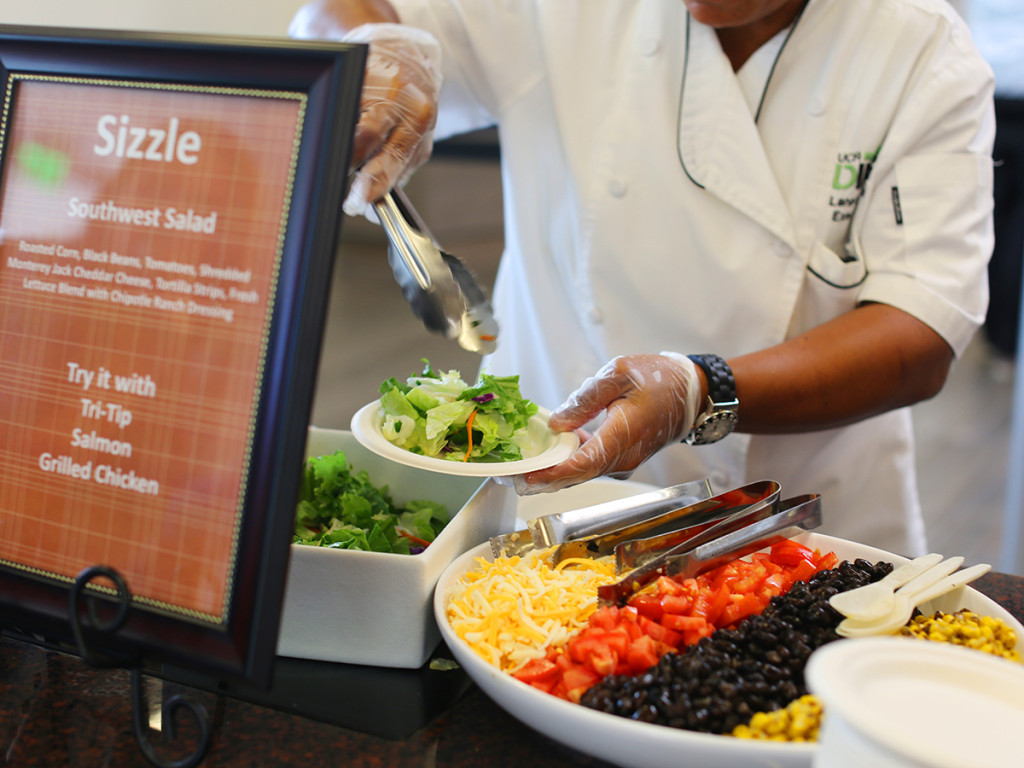
In comparison to other on-campus jobs, a unique benefit that student workers of UCR Dining Services receive is a meal perk, which allows student workers to receive a meal at any campus restaurant. Prior to the school year, student workers were entitled to a free meal worth $10, yet a recent change to the meal perk program has reduced this amount to $5.
Due to employing about 900 students a year —which is 3 to 4 percent of UCR’s student population — dining services has had to invest a large amount of funds in students to sustain the meal perk program. As Dining Executive Director Cheryl Garner explains, “for every 3-hour shift, it was costing us about $3.30 each time a student were to receive a meal. Multiply that by all of the shifts and students we employ and the costs quickly became astronomical.” Last year’s meal perk program amounted to at least “$25,000 each week.” However, with this new program, Dining services can continue hiring more workers while cutting costs in the face of rising food prices.
Additionally, Garner noted that this meal perk change is not new to the food industry as local chain restaurants like McDonald’s or Carl’s Jr often give its employees 20 to 50 percent discounts off of food. Though this is true, it must be kept in mind who this meal perk is personally affecting — the student workers.
Let’s face it — life as a student, especially with a part-time job, is hard in this economy. Pursuing a college degree costs a pretty penny, but is necessary if one wants to find employment that pays. To do so, students often have to pay for a number of expenses like rent, gas, textbooks, tuition (that dreaded, dreaded tuition) and school supplies to name a few. Yet as students, we endure a certain lifestyle that doesn’t exactly consist of expandable time to spend working. It’s understandable that the university put a cap of 19 hours worked on student-workers, since our main priority should be to get our degrees (why else would we be in college?).
Even with a part-time job, many students are still budgeting out important necessities, such as food. On a 2012 UC-wide survey on students’ lifestyle, when asked if they skipped meals to save money, about 10.9 percent said “somewhat often,” 9.2 percent said “often” and 6.0 percent said “very often.” While initiatives like the R’Pantry are a great step toward alleviating this situation, meal perk programs should not be dismissed, especially due to their appeal. One student worker who has worked at dining services for over two years and wishes to remain anonymous said, “That meal perk was something that I looked forward to … food helped in a sense that during or after a shift I can easily just sit down and eat.” Due to this meal perk, many student workers apply to work for dining services in order to have not only a daily necessity, but an ease in their schedules as most students, as another anonymous student stated, “are swamped with classes and work and clubs and life.”
This decrease in the meal perk wouldn’t even be an issue if the food that student workers had to buy wasn’t so expensive. While reverting back to the old program of $10 is not efficient and the current program of $5 is not enough to buy campus meals, a middle ground of $7.50 could be a solution. Or, readjusting the meal perk program to offer meals based on how many hours a student works in one week, or allowing the meal perk to let unused money roll over to allow students to save for a better meal later.
Though, beyond compromises, dining services should have considered gauging how student workers would perceive the change more directly, perhaps they should hold a forum or a meeting before pursuing the action. Just a chance for their student workers to voice their opinions. As the first anonymous student stated: “it was actually shocking to realize that they actually did that change.” The new meal perk program shouldn’t have been a “shock.” If anything, dining services should have realized how valued this benefit is to students.








